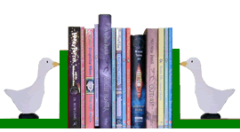The term ‘self-publishing’ can be misleading as it’s often applied to something more accurately called subsidy publishing. So lets sort out the various options that are available to get your book into readers’ hands.
Traditional publishing
This is the system that was the norm before the digital revolution. You find a publisher willing to take on your book, then you sign a contract licensing the rights to them. You don’t pay anything. The publisher produces the book entirely at their expense and controls what happens to it. Their name is on the book as the publisher of record. (The one registered as the publisher with the ISBN people).
In return, the publisher pays you a royalty – an agreed percentage of either the cover price or the price received for each book they sell. Royalties are usually paid every six months, three months in arrears. Sometimes, but not always, the publisher pays you an advance of royalties before the book is published. If they do, you won’t be paid any more until the book has earned enough to cover the advance, at which point it is said to have “earned out”.
Advances are rarely as high as the huge numbers bandied about in the press and are often very modest. They are also usually paid in instalments: one third on signing the contract, one third on delivery of the manuscript and one third on publication. If you’re going for a traditional deal, try to get this split adjusted so you get more of the advance up front and as little of it as possible on publication.
Self-publishing
Self-publishing is at the other end of the spectrum from traditional publishing, and it’s sometimes called independent publishing. Whichever name you prefer to use, this option means that you, the author, are also the publisher. You keep control of your rights and every aspect of how your book is produced. You publish it under your own name or the name of an imprint you own, and you are the publisher of record.
Self-publishing doesn’t mean you have to do everything yourself. Just like a traditional publisher, you can pay editors, designers and other people to help you. You choose who you will use and you pay them a fee for their time and effort, just as you would any builder, car mechanic or other expert who does work for you. This involves some outlay on your part. but you keep all the profits earned by your book.
Unless you’re just selling the book face-to-face and via your website, you’ll need to use distributors to help you get the book into readers’ hands and, if you’re doing a print edition, you’ll need to use a printer or print-on-demand company to produce it. As a self-publisher, this means probably means using Kindle Direct Publishing, Smashwords and Draft2Digital to sell your ebooks and Createspace, Ingram Spark or other printers and distributors to produce and sell your print books. To do this, you’ll need to give permission to produce the book, but you won’t give them control of your rights.
Subsidy Publishing
This is a halfway house between the two options and tends to be the worst of both worlds. Just as with a traditional publisher, you sign a contract licensing your rights to them and they are the publisher of record. However, with subsidy publishing, you pay all or some of the cost of publication yourself instead of the publisher carrying all the risk. So you are laying out your money, but someone else is in control of what happens to your book. And the publisher is earning money from you so they have less incentive to successfully market your book.
There may be some situations where subsidy publishing makes sense, but it’s vital that the company concerned is reputable. Unfortunately there are some high-profile subsidy publishers that exist primarily to make money out of vulnerable writers desperate to see their words in print rather than to sell books to customers. Worse still, having their name on your book will put off some of your potential readers, and the books they produce are often so expensive that no one will buy them.
Never sign up with a subsidy publishing company without taking advice from other authors and checking online to see if there are disgruntled customers out there. And before you sign on the dotted line, explore the possibility of genuinely self-publishing. It takes time and effort, but it may be cheaper and more satisfying in the long run.
It’s all about who’s in charge.
Life would be so much easier if subsidy publishers called themselves that. But they don’t. Many of them call themselves self-publishing companies, so it’s hard to tell the difference between them and the companies who offer genuine help to self-publishers.
The way to tell the difference is to see who is in control. If you’re genuinely self-publishing, it should be you. You should choose your editor, your cover designer and your illustrator (if any) and you should decide how much your book will sell for.
Diana Kimpton
Use our search box to find the right editor, designer or illustrator to help produce your book.
